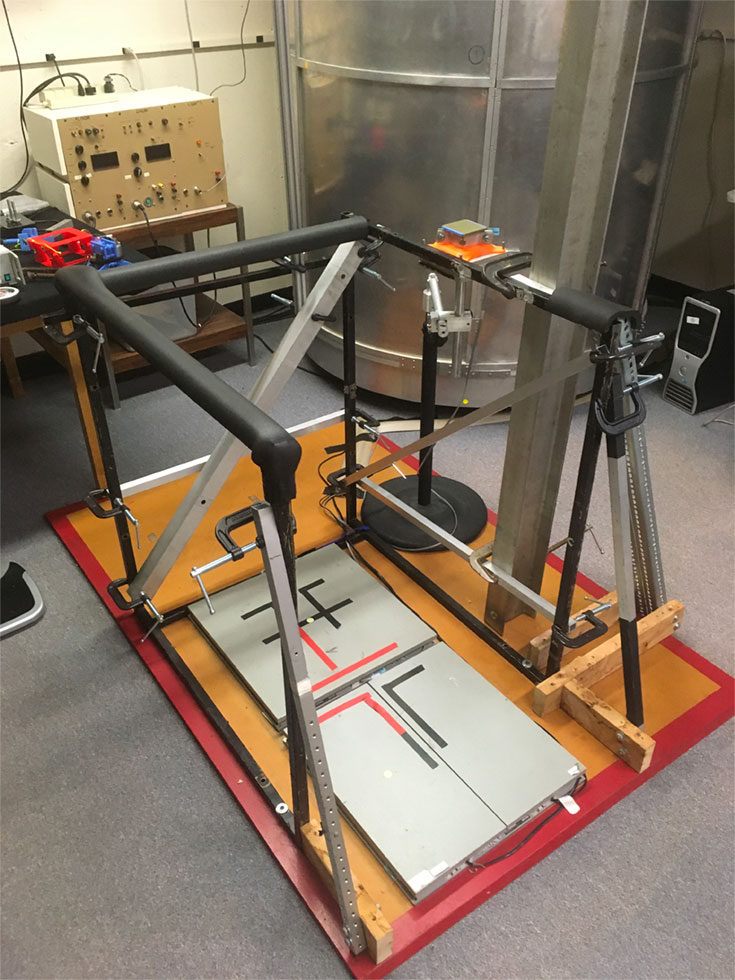Force Platform Facility
 The Balance Platform and Motion Tracking facility is used to study balance in many paradigms — altered gravity (parabolic flights); altered velocity dependent force environments (in rotating room); balance of clinical patients (like diabetic patients with neuropathy); recovery from sudden falling; and step initiation.
The Balance Platform and Motion Tracking facility is used to study balance in many paradigms — altered gravity (parabolic flights); altered velocity dependent force environments (in rotating room); balance of clinical patients (like diabetic patients with neuropathy); recovery from sudden falling; and step initiation.
Force plates are used to study the dynamics involved in control of human upright balance. These devices measure the force distributions and torques under each foot. A Single Force Plate gives six channels of data output (three components of Force, and three of the torques). From these variables we can determine the trajectory of the Center of Pressure on the horizontal plane under each foot.
A Dual Force Plate can be used to make measurements simultaneously and separately under each foot. The Small (Touch) Force Plate is customized to be sensitive at much lower magnitudes of force (from few grams to few hundreds of gram), allowing for the study of the shear dynamics and normal touch forces and mechanism of touch stabilization of balance. The force plate transducers can either be strain sensitive resistances like in the AMTI or piezoelectric crystals, like the Kistler.
To understand and model the biomechanics and control of human balance, the dynamics and the kinematical data are required. This information is collected by pairing the force plates with a motion capture system (like Optotrak, Vicon or Coda systems) to capture the movement of markers attached to body limbs. In addition, the Graybiel Lab has a custom built system to deliver measured perturbations using load cells, and using custom built software on Labview for seamless control over data acquisition settings.